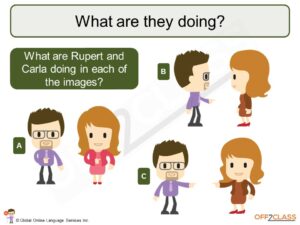5 min read
Share this post

Most teachers cover subject and object pronouns quickly, and rightly so. Students often already have a grasp of them even without a teacher-led lesson. However, as a student progresses, an understanding of the possessive, reflexive and reciprocal pronouns are vital, since they refer back to a subject previously mentioned in a conversation or text. Sometimes, in the case of reflexive pronouns, the subject and object can be the same, not to mention that English has reflexive verbs that most certainly won’t mirror the reflexive verbs in your student’s L1. A student’s ability to capture pronouns when listening is essential for understanding natural speech, so make sure that you cover this very important area in depth, and don’t be afraid to review the pronouns from time to time!
These three pre-intermediate lessons are in addition to our existing introductory lessons covering subject pronouns, object pronouns and possessive nouns (OK… this last one is not a pronoun lesson but it complements a knowledge of possessive pronouns). Here’s a quick look at what you’ll find in our possessive, reflexive and reciprocal pronouns lessons:
N4.2 Possessive pronouns – Mine – Yours – Ours
There are a number of ways to express possession in English, and we generally introduce possessive adjectives and the +’s structures first. In this lesson, we introduce mine, yours, his, hers, ours and theirs, a nd provide plenty of practice for students.
nd provide plenty of practice for students.
N4.3 Reflexive pronouns – Myself – Ourselves
Many verbs need an object in English, and when the subject and object are the same, we need to use reflexive pronouns. This lesson introduces myself, yourself, himself, herself, itself, ourselves, yourselves and themselves, providing ample opportunities to distinguish between object pronouns and reflexive pronouns.
We also look at reflexive pronouns used for emphasis, and this is their most common usage in English. So go ahead and make sure that your student can use reflexive pronouns themselves!


N4.4 Reflexive and reciprocal pronouns – Each other – One another
In this lesson, your student will do a quick review of the reflexive pronouns before introducing one another and each other. Along with the reciprocal pronouns, we also cover the structures by myself, on my own, and my own + noun.


We hope these pronouns lessons will be engaging and rewarding for you and your pre-intermediate students. We’ll be continuing the round out our Nouns & Articles category in the coming weeks.
Share this post



Leave a Reply